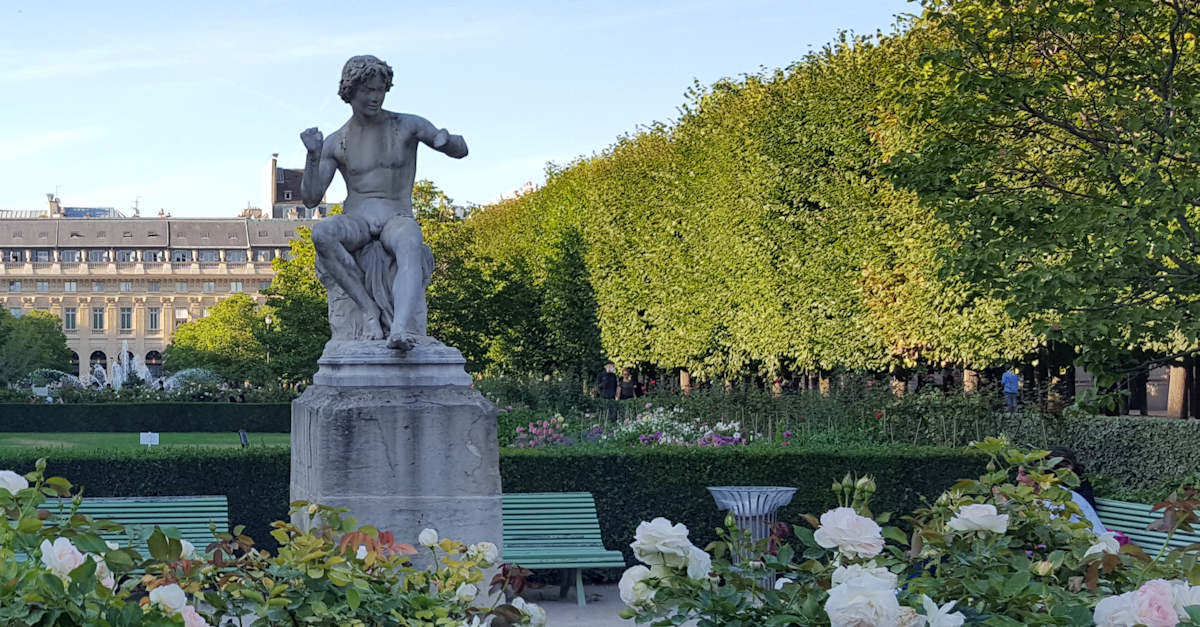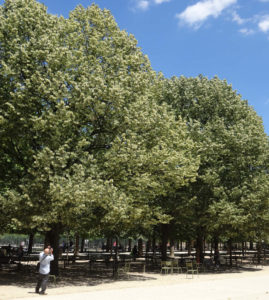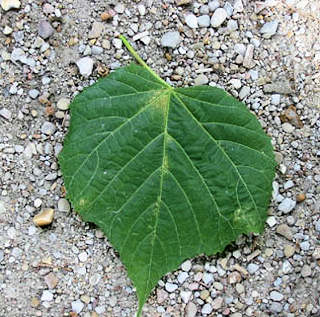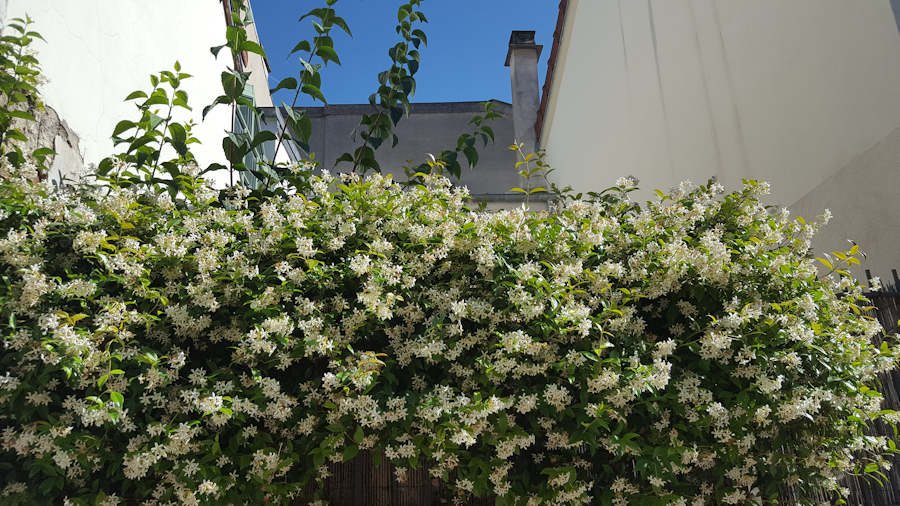
Lindens in the Palais Royal Garden in Paris in June. Photo © GLKraut
Everyone seeks out the must-sees of Paris, but the must-smells can also be remarkable in June. That’s when the linden trees and jasmine shrubs are in bloom this year. No need to follow a guide, just follow your nose.
And not just in Paris. While you might not even notice a linden’s tiny yellow-white flowers within its full green mane of leaves, the smell—a limish honeysuckle scent, varying by weather and species between honey-lemon, gentle musk and sickly sweet—can catch you unaware as you explore the village- and cityscapes of France.
 The flowering period can begin as early as mid-May in the south and may continue to mid-July in the north, depending on the weather, but June is when the scent of lindens typically lifts the nose and then the gaze with the question, “Wow! Where is that scent coming from?”
The flowering period can begin as early as mid-May in the south and may continue to mid-July in the north, depending on the weather, but June is when the scent of lindens typically lifts the nose and then the gaze with the question, “Wow! Where is that scent coming from?”
The scent has caught me by surprise when exiting the Lyon metro at Place Bellecour; it has followed me along broad streets in Chambery; it felt luxuriant during a stroll along Allée de Tourny in Bordeaux; it tasted like a floral sweetener in my espresso at Café Saint Sernin in Toulouse, and it has intoxicated me on streets and squares in Nantes, Dijon and elsewhere. Yes, I travel a lot in June.
Visitors long for lavender in Provence in summer, but I’ve got a nose for the lindens there in late spring. And at any time of year when taking travelers to the Landing Zone of Normandy, I invariably stop beneath the tremendous lindens on Place de Gaulle in Bayeux, many of which were already centenarian by the time Charles de Gaulle gave his famous speeches there, a first on June 14, 1944, a second on June 16, 1946. (There, the ancient trees have grown dangerously tall and for that reason several dozen were cut down last year.)
Various species of linden also grow in the wild, with major forests of them in Provence and Roussillon. And while you’ll come across broad or tall lindens in cities and towns, shorter, pruned lindens are the traditional obedient soldiers of schoolyards, village squares, palace gardens, city parks and broad alleys. In Paris and elsewhere, they’ve been planted in orderly rows to form leafy canopies as one of the triumvirate of urban greenery, along with the disheveled horse chestnut and the poised plane tree.

Silver lindens form an honor guard in Paris’s Palais Royal Garden while Crimean lindens shade the Place des Vosges. Lindens are part of the historic orderliness of the Tuileries Garden while they’re less constrained near the tennis courts and playground of the Luxembourg Garden.
The linden, le tilleul in French, tilia, has for centuries been a favored tree of European cityscapes, most famously along Berlin’s Unter den Linden, which leads from the Brandenburg Gate. France has its own Unterlinden, a beaux-arts museum in the Alsatian city of Colmar.
With so many lindens around, it’s only natural that linden tea is one of most common herbal teas in France, whether alone or conjugated into linden-mint and linden-verbena bags. And perfumers have a nose for the flower in certain fragrances and eaux de toilette. You might also come across linden flower honey.
 When maintained in a village or city square, the branches of the linden are sharply pruned in February, and they begin to bud in March, but it’s as their leaves unfold with the arrival of spring that the romance begins. April can be a rainy month in Paris—you might walk around for two or three days with your collar up and your head down—but then the rain will stop and you’ll look up and find the linden’s young, pale green, heart-shape leaves decorating the branches. Like love, one half will be longer or wider than the other. By May, lindens cast full shadows, and in the south may begin to inconspicuously flower before the end of the month. But it’s typically in June that the white-to-yellow flowers blossom, releasing a fragrance that can reach you as a whisper or a scream. Eventually, the shade of summer gives way, in September or early October, to the brief yellow-brown flush of coloring of autumn in northern France before the leaves fall.
When maintained in a village or city square, the branches of the linden are sharply pruned in February, and they begin to bud in March, but it’s as their leaves unfold with the arrival of spring that the romance begins. April can be a rainy month in Paris—you might walk around for two or three days with your collar up and your head down—but then the rain will stop and you’ll look up and find the linden’s young, pale green, heart-shape leaves decorating the branches. Like love, one half will be longer or wider than the other. By May, lindens cast full shadows, and in the south may begin to inconspicuously flower before the end of the month. But it’s typically in June that the white-to-yellow flowers blossom, releasing a fragrance that can reach you as a whisper or a scream. Eventually, the shade of summer gives way, in September or early October, to the brief yellow-brown flush of coloring of autumn in northern France before the leaves fall.
As to the jasmine mentioned in the lead to this article, the seductive scent of its little white flowers—more visually noticeable than the lindens because the shrubs are typically at nose level as you walk along the street—is a more recent addition to the smellscape of Paris. And what a pleasure to the senses it is as well.

Put your nose to the screen and you’re almost there.
© 2022, Gary Lee Kraut

